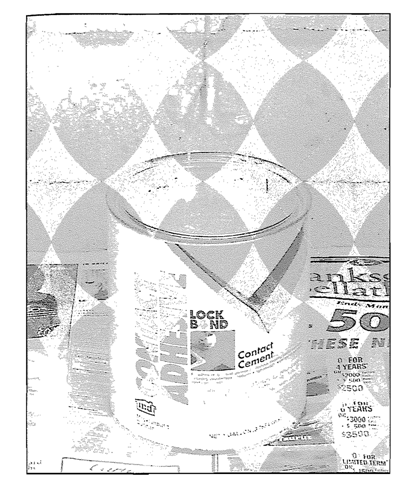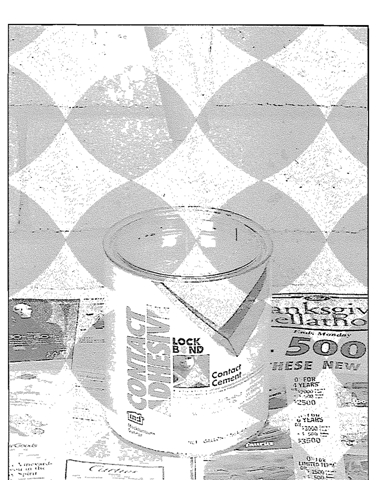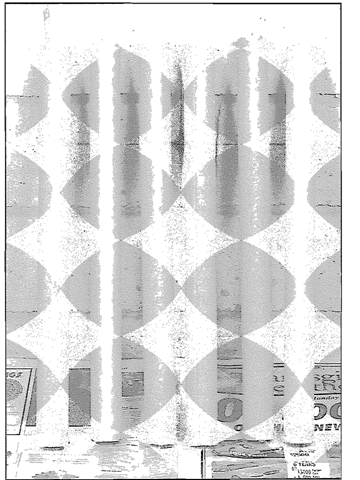The motors in this topic are all core burners. To allow for removal of the core spindle, all the cores are tapered. As a result, a point occurs during motor operation, when the flame reaches the casing wall near the nozzle, before the last of the propellant toward the front of the motor is consumed. If there are any problems with the bond between the propellant and the casing, the flame works its way under the edge of the propellant {Figure 8-31). This causes a sudden increase in chamber pressure and thrust during the final moments of the motor’s burn, and you can minimize the problem by coating the inside of the tubes with glue. You can use yellow contact cement or a 50/50 mixture of white glue and water. Contact cement is the glue used to bond Formica counter tops, and you can buy it at a hardware store. To glue-coat a batch of tubes, proceed as follows.

Figure 8-33. The rag is dipped into the glue.

Figure 8-34. As the rag is swabbed up and down inside the tube, excess glue drips back into the container.
Straighten out a coat hanger, and crimp a small piece of clean rag in one end (Figure 8-32). Place a few layers of newspaper on the floor. Place the open container of glue on the newspapers, and dip the rag into the glue (Figure 8-33). Slip one of the tubes over the coat hanger, and holding the hanger by its upper end. swab the rag up and down until the inside of the tube is completely covered with glue. If you hold the tube directly over the container, any excess glue will drip back in (Figure 8-34).
Lay more sheets of newspaper next to a wall, and as shown in Figure 8-35. lean the finished tubes on-end until the glue is dry (at least an hour). The bottom end of each tube will stick to the paper, but you’ll cut this part away when you trim the tubes to length. With a little practice and the right size rag. you can work very quickly, and coat a dozen tubes in 5 minutes.
Important note about contact cement. As this topic goes to the printer, some of the manufacturers of contact cement have started making a “nonflammable” version. As of the year. 2004. I see it in all the hardware stores. In my experiments with just one brand. I found that, when dry. this nonflammable contact cement does not resoften with acetone, so I’m guessing that it will not work for this application.

Figure 8-35. A batch of glue-coated tubes leaned against a wall to dry.
GLUE COATING (Rocket Motor)
Next post: WORKING WITH PROPELLANTS (Rocket Motor)
Previous post: Drying (Rocket Motor)
